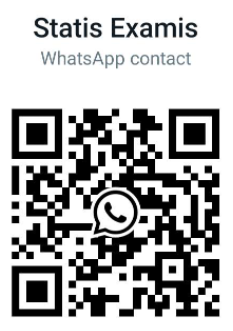Navigation » List of Schools » Prince George Community College » Biology » Biology 2060 – Anatomy and Physiology II » Spring 2021 » Lecture Exam 1
Question #1
A 1
B 2
C 4
D 6
E 8
Question #2
A construction,plasmin
B destruction,plasmin
C construction,thrombokinase
D destruction, thrombokinase
E construction,actinomyosin
Question #3
A several hours whentissue damage is moderate.
B several minuteswhen tissue damage is extensive.
C a few millisecondswhen tissue damage is moderate.
D almost a fullminute when tissue damage is extensive.
Question #4
A b, c, d, f
B b, c, f
C a, c, d, f
D a, c, f
E a, d, f
Question #5
A 85
B 4
C 37
D 1
E 58
Question #7
A Lymphocytes and monocytes
B Neutrophils, basophils, eosinophils, and monocytes
C Neutrophils
D Lymphocytes
E Basophils and eosinophils
Question #8
A proteins.
B nutrients.
C formed elements.
D electrolytes.
E solvents.
Question #9
A TRUE
B FALSE
Question #10
A the recipient hadtype AB blood.
B there were noagglutinins (antibodies) in the recipient blood.
C the wrong bloodtype was used.
D the donor had typeO blood.
Question #11
A the clinicalhematocrit is much larger.
B their values arevery similar.
C the truehematocrit is much larger.
Question #12
A proconvertin with the assistance offactor IX.
B prostacyclin withthe assistance of activated factor V.
C collagen with theassistance of von Willebrand factor.
D collagen with theassistance of prothrombin.
E prostacyclin withthe assistance of thromboxane A2.
Question #13
A Neutrophils
B Lymphocytes
C Eosinophils
D Monocytes
E Basophils
Question #14
A lymphocyte.
B basophil.
C neutrophil.
D eosinophil.
E monocyte.
Question #15
A Lymphocyte
B Eosinophil
C Basophil
D Monocyte
E Neutrophil
Question #16
A FALSE
B TRUE
Question #17
A TRUE
B FALSE
Question #18
A buffy coat.
B platelets.
C electrolytes andwaste products.
D monocytes.
E erythrocytes.
F plasma.
Question #19
A Prevention
B Regulation
C Protection
D Transportation
Question #20
A a, b, e
B b, c, d, e
C b, c, e
D a, b, c, d
E a, b, c, d, e
Question #21
A prothrombins.
B globulins.
C albumins.
D fibrinogens.
E endocrinehormones.
Question #22
A Prevention
B Protection
C Transportation
D Regulation
Question #23
A FALSE
B TRUE
Question #24
A c, a, b, e, d, f
B c, a, e, b, d, f
C c, b, a, d, e, f
D a, b, c, e, d, f
E a, c, d, b, e, f
Question #25
A 6
B 8
C 2
D 4
E 16
Question #27
A trabeculaecarneae.
B conusarteriosus.
C pectinatemuscles.
D tricuspidvalve.
E tendinous cords.
Question #28
A b, d
B a, b, c, d
C e
D a, d
E a, c, d
Question #29
A 1
B 4
C Highly variable, depending on the heart beat rate
D None of the choices is correct.
E 2
Question #30
A FALSE
B TRUE
Question #31
A Intercalateddiscs
B Cardiac discs
C Sarcoplasmic reticulum
D T-tubules
E Z discs
Question #32
A TRUE
B FALSE
Question #33
A TRUE
B FALSE
Question #34
A TRUE
B FALSE
Question #35
A a, c, e
B a, b, e
C b, d, e
D a, c, d
E b, c, e
Question #36
A vein.
B artery.
C capillary.
Question #37
A a long T-Pinterval.
B a long P-Rinterval.
C a short T-Pinterval.
D a short P-Rinterval.
Question #38
A fills the cusps ofthe semilunar valves, causing them to expand and block the backflow ofblood
B pushes against thesemilunar valves and closes them.
C pushes against theatrioventricular valves and opens them.
D pushes against thesemilunar valves and opens them.
E fills the cusps ofthe atrioventricular valve causing opening of the bicuspid and closure of thetricuspid.
Question #39
A Right atrium and left ventricle
B Right atrium and right ventricle
C Left atrium and right atrium
D Left ventricle and right ventricle
E Left atrium and left ventricle
Question #40
The internal wall surface of each ventricle displays large, smooth, irregular muscular ridges called
A conusarteriosus.
B tendinous cords.
C trabeculaecarneae.
D atrioventricularopening.
E pectinatemuscles.
Question #41
A FALSE
B TRUE
Question #42
A Projects slightly posteroinferiorly toward the left side of the body
B Projects slightly posteroinferiorly toward the right side of the body
C Projects slightly anteroinferiorly toward the right side of the body
D Projects slightly posteroinferiorly toward the midline of the body
E Projects slightly anteroinferiorly toward the left side of the body
Question #43
A beats per minute per gram.
B milliliters perminute per gram.
C grams perminute.
D millimiters perhour per kilogram.
E liters pergram.
Question #44
A allows cardiacmuscle cells to contract and then relax without locking up.
B occurs only inskeletal muscle and makes those fibers’contractions most forceful.
C leads to tetaniccontractions in smooth and skeletal muscle.
D allows cardiacmuscle cells to exhibit synchronous fibrillation.
Question #45
A it is underconstant pressure, but its movement is dictated by the control of valveopenings and closures.
B it moves along itspressure gradient, and that gradient depends on contraction and relaxationduring the cardiac cycle.
C the veins andarteries constrict and dilate to propel and attract blood.
D All of the choicesare correct.
Question #46
A binds tocalmodulin.
B binds to theZ-disc.
C binds toactin.
D binds totroponin.
E binds to tropomyosin.
Question #47
A b, a, d, c, f, g, e
B c, d, a, b, f, g, e
C d, b, a, c, f, g, e
D f, g, d, c, b, a, e
E c, d, a, f, b, g, e
Question #48
A pressure changes ofalternating contraction and relaxation during the cardiac cycle.
B contraction andrelaxation of papillary muscles that pull on heart strings.
C action potentialswithin the cusps of the valves.
D contraction of thesmooth muscle in the walls of the great vessels leaving the heart.
Question #49
A are only used inthe fetal heart.
B separate the rightand left sides of the heart.
C direct theconduction impulse through the heart muscle.
D stabilize and holdthe arteries leaving the heart.
E permit the passageof blood in one direction.
Question #50
A Visceral circuit
B Pulmonary circuit
C Systemic circuit
D Coronary circuit




